
What can art educators learn from non-extractive practices?
As we welcome in a new year, starting a new term and imagining new ways of being, perhaps we can, as art educators, turn also towards new ways of understanding our relationship with our sense of creative purpose.
It would of course be most perfect to start the new year with a sense of optimism and energy – and for many that will be the case – and if so, all good. But we do need to recognise that for many people, both educators and those we educate, we ended the year with a feeling of overwhelm and perhaps even exhaustion.
If we were lucky, it was great to be able to step off our productivity-driven, daily grind. Returning (and again, lucky us to have something to return to) has made me think about how we might begin to look in on this driven culture from a slightly different angle, especially in the light of learning to re-see what the visual arts can offer us, to help us be happier, healthier, more connected human beings. How can we learn to move forward, incrementally, in a way which is more sustainable, to both ourselves (as cyclical beings) and the planet? How can we help lay the groundwork so that the children and young people we teach and care for can imagine a more sustainable approach to their own lives?
The notion of non-extraction comes from a critical understanding of extractive economies, as applied to industry, the environment or colonialism. Any mechanism, organisational structure, or way of being which takes more out than it puts back in (intentionally or otherwise), leaving the source or those in its path depleted, might be seen as extractive. Non-extractive practices on the other hand, attempt to preserve, value, and enhance, helping to sustain energy, resources and ways of being.
As we go about our work as art educators and artists, perhaps 2026 can be the year we examine our current attitude to extractive and non-extractive practices as they relate to teaching, learning and the visual arts. Let’s think expansively and become aware of where we might be guilty of perpetuating the myth that extractive processes are the only way. Once we become aware, we can then start to use our creativity to make small (or large) changes to our day-to-day practices, which enable the ecosystems in which we operate to function with kindness, energy and sustainability.
AccessArt will be returning to these themes of course, but for now, a few gentle questions to help us start examining our attitudes to extractive / non-extractive practices as teacher, learner and artist. Some of these questions are deliberately tangled to encourage divergent thinking. They are not intended to be used as tools with which to punish ourselves. Instead, enjoy them as challenges to explore. New approaches – new energy.
Physical
-
Where do the materials you use come from? How do you navigate the balance between providing enough materials to aid exploration without encouraging waste? How do the things you make exist in the world? What is material value? How much do you talk about these issues with other makers/learners?
Cultural
-
How do you relate to the images and ideas you come across from other cultures? How much do you understand and respect the starting points/legacy which created these works? What does “borrowing” look like for you? Does it feel ok?
-
How much do you impose on others? Are there ways you could create space for the cultural experiences of those you work with to be seen and heard?
Creative Process
-
Is our creativity endless? Is it cyclical? What does creative rest look like? How do we value intention? Do we need to measure? What does respect to ourselves as creative beings look like?
Enjoy the new year. Gently does it.
Paula Briggs, January 2026
This is a sample of a resource created by UK Charity AccessArt. We have over 1500 resources to help develop and inspire your creative thinking, practice and teaching.
AccessArt welcomes artists, educators, teachers and parents both in the UK and overseas.
We believe everyone has the right to be creative and by working together and sharing ideas we can enable everyone to reach their creative potential.
You May Also Like…
cut out typography
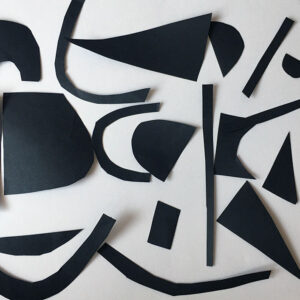
typography for children
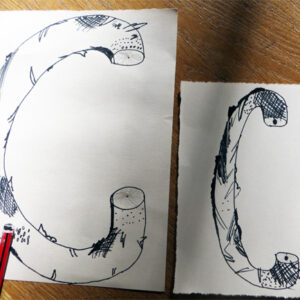
drawing with scissors
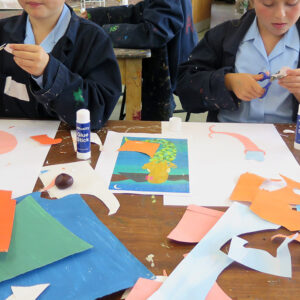
CPD Recording: Transforming Letters
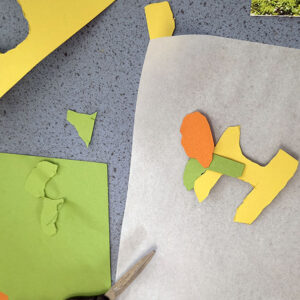
You May Also Like….
Teenagers write in invented text

Teenagers write in invented text

Monoprint to explore poetry

3d Visual Maps

You Might Also Like…
why we need to allow art to be a unique subject

What does success look like?
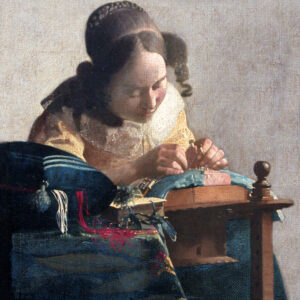
Visual Arts Pedagogy
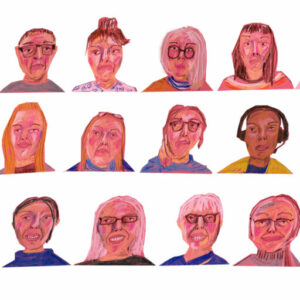
You Might Also Like…
2d and 3d Fashion Designs using Painted Paper
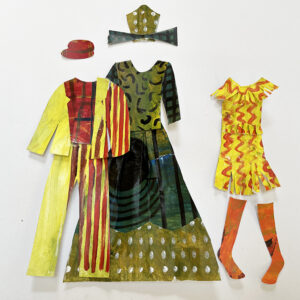
Barbie and Ken Transformation
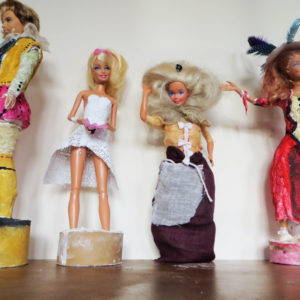
Puppets Inspired by Historical Paintings
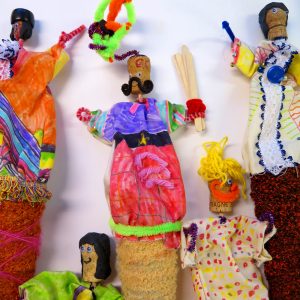
You May Also Like…
Assessment & Progression
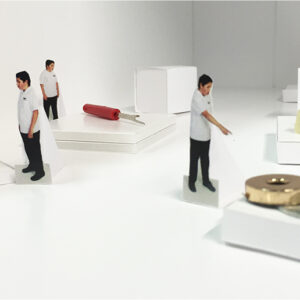
visual arts pedagogy

You May Also Like…
rethinking our approach to assessment
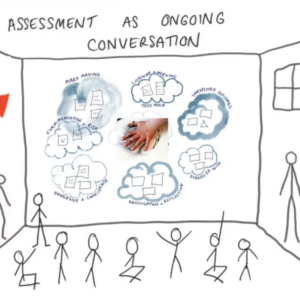
assessment and progression
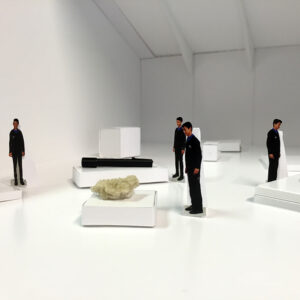
You May Also Like…
Assessment & Progression

How can we blend installation and performance?
Molly Haslund’s The Circle Project involves drawing large circles on the ground in a variety of locations using a human size compass, with a focus on physical movement, patterns and collaboration.
Watch the video below and discuss why she draws these circles and the impact they might have in a space you use yourself.
Please Note:
This page includes links and videos from external sites, verified at publication but subject to change.
Teachers should review all content for classroom suitability.
Report any issues, and check school firewall settings if videos don’t play.



The Circle Project by Molly Haslund
Teacher’s Notes
“Molly Haslund ventures out into the city wearing grey: a grey suit, grey socks and grey shoes so that she blends in with the tarmac and the pavement. She carries a huge pair of compasses much taller than herself. She stops somewhere and starts drawing a white circle on the ground. She completes the first circle and then moves the pair of compasses and starts drawing a new circle that overlaps the first one. She draws a third circle and stands in her grey shoes in the middle of the circle for a moment before snapping the pair of compasses together and moving on.” https://www.mollyhaslund.com/circles-2013-2
“… The focus is on the physical action, on the movement of the circles, and the patterns emerging and disappearing again – and of course the effect grows with the number of participants. on the other hand, if you want to draw alone, you can just withdraw a little from the rest. A bit like on the dance floor.” Molly Haslund
Watch the video with the pupils, and look at the images below. Find questions to prompt discussion at the end of this resource.

Circles, Molly Haslund, 2015, New York, Peekskill Project #6, Hudson Valley MOCA, Photo by Joe Orangias
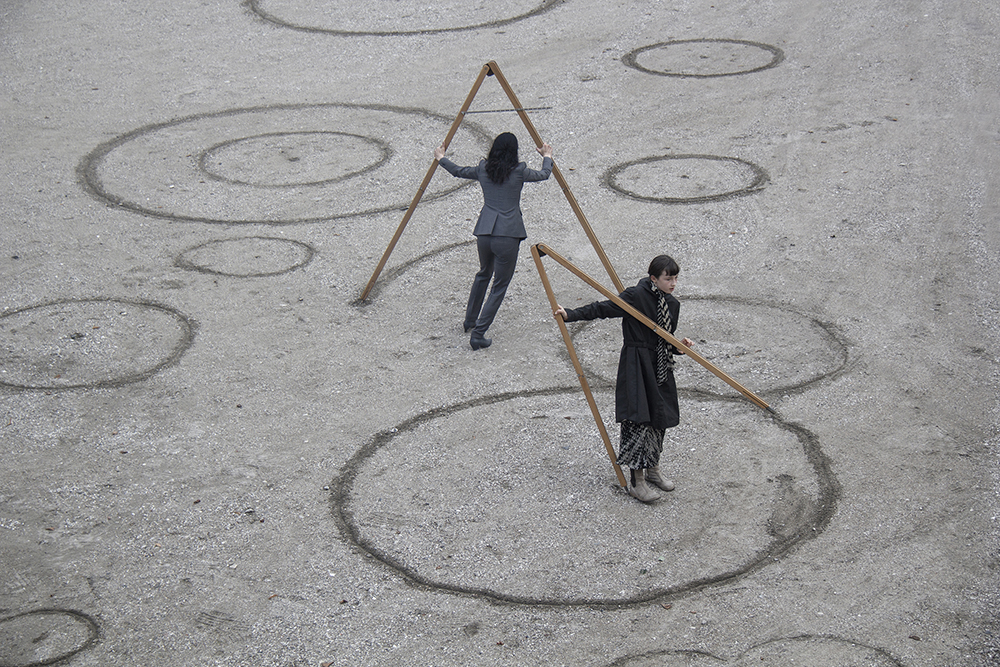
Circles (2013), Molly Haslund, Museum of Contemporary Art, Roskilde, Denmark, Photo by Matilde Haaning

Circles, Molly Haslund, 2014, Art Week, Superkilen, Copenhagen, Denmark, Photo by Matilde Haaning
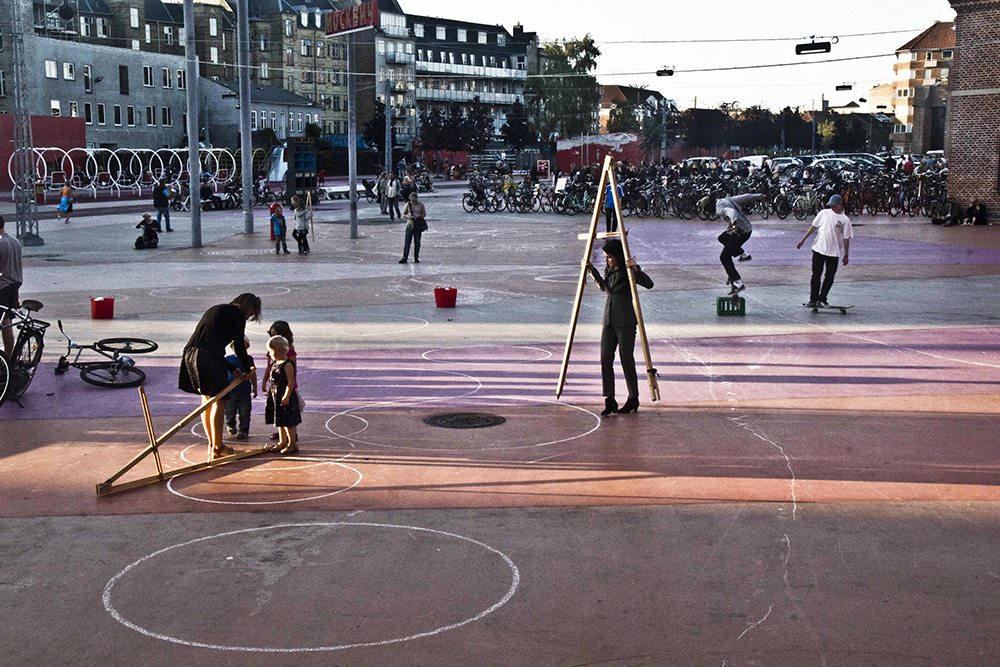
Circles, Molly Haslund, 2014, Art Week, Superkilen, Copenhagen, Denmark, Photo by Matilde Haaning
Questions to Ask Children
How would you feel if you came across these circles in your street or playground, without knowing who had made them or why? What would you do? Would they change the way you move?
How do you think Molly, the artist, chooses where to make her circles?
How could you make similar circles in your playground, using chalk tied to sticks?
How would the circles you make join up with the circles your friends make?
What would other pupils in your school think if they discovered your circles? What do you think they would do?
What other shapes could you make with your body in the playground? Would you need tools?
If music played would you make different shapes? How would the shapes be different?
This Talking Points Is Used In…
Pathway: Spirals
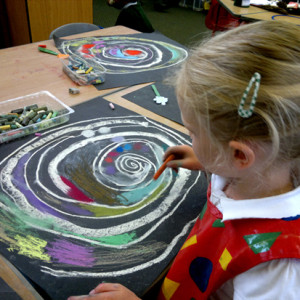
using sketchbooks to make visual notes
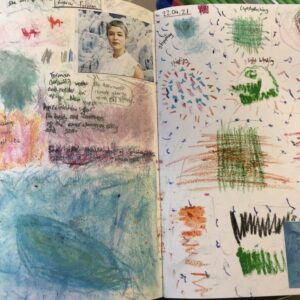
Show me what you see
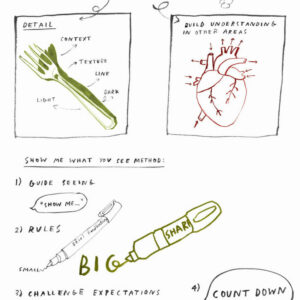
See This Resource Used In Schools…
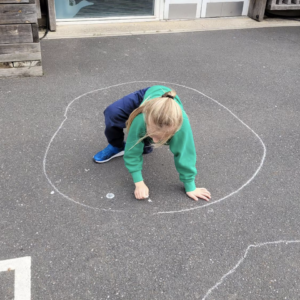
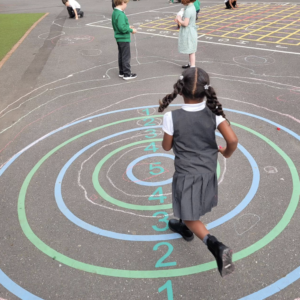
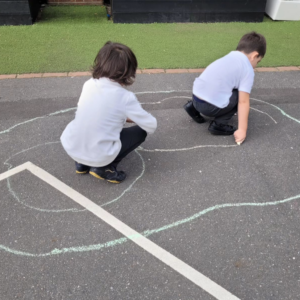
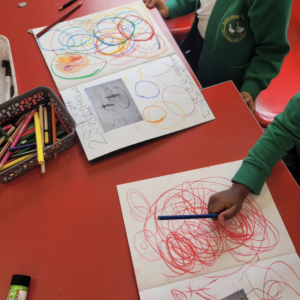
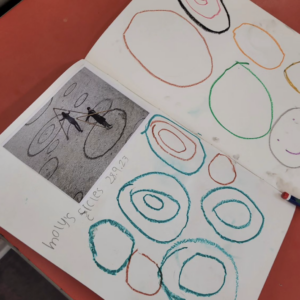
A collection of imagery and sources designed to explore the idea that artists can be collectors and explorers.
Please note that this page contains links to external websites and has videos from external websites embedded. At the time of creating, AccessArt checked all links to ensure content is appropriate for teachers to access. However external websites and videos are updated and that is beyond our control.
Please let us know if you find a 404 link, or if you feel content is no longer appropriate.
We strongly recommend as part of good teaching practice that teachers watch all videos and visit all websites before sharing with a class. On occasion there may be elements of a video you would prefer not to show to your class and it is the teacher’s responsibility to ensure content is appropriate. Many thanks.
*If you are having issues viewing videos it may be due to your schools firewall or your cookie selection. Please check with your IT department.*
This resource is free to access and is not a part of AccessArt membership.




Introduction
The following videos and weblinks explore the idea that artists can be collectors and explorers.
By approaching the world with curiosity and openness, we can re-see the things around us and use them to inform and inspire our creative processes.
The following artists all venture out into the world, exploring familiar and new places and finding inspiration in the things around them. These artists then bring the things they “collect” back to their studios to make work.
Andy Goldsworthy
Andy Goldsworthy is a British Sculptor who has become know for making art from things he finds in the landscape. Sometimes he creates the artwork in the landscape itself (he calls this “land art”), but in this video he shares how he takes ice and rocks from the landscape and lets it make a “drawing” as it thaws in his studio.
The video is suitable for children, however depending upon the abilities/experience of the children in your class you may wish to watch the video yourself, then turn the sound down as you play it to the children, using your own voice to help share what the artist is doing.
TateShots: Andy Goldsworthy, Studio Visit
Questions to Ask Children
Andy Goldsworthy says: “Art has this amazing ability to show you what’s there.”
What do you think he means by that?
Do you like the artwork in the video more because you can see how it has been made?
How much control does Andy have over the artwork he makes? Does he want more control?
Joseph Cornell
Joseph Cornell was an American visual artist and film-maker, one of the pioneers and most celebrated exponents of assemblage. He was a great collector.
His images are copyright protected but the Royal Academy has created some excellent videos about his work, and there are images on the site too.
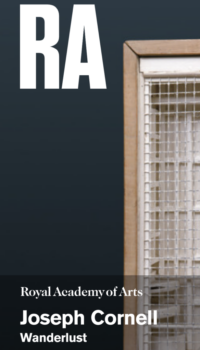
Hassan Hajjaj
Hassan Hajjaj was born in 1961 in Larache, Morocco, and now lives and works in London, UK. He is inspired by Moroccan culture and artefacts and his work crosses many disciplines including photography and design.
Questions to Ask Children
What kinds of things catch Hassan’s eye when he is looking around his environment?
Do you think there is a clear distinction between “art” and “life” in Hassan’s mind?
Lorna Crane the Brush Maker
Lorna Crane is an abstract painter whose work is inspired by the Australian landscape. She makes her own artist’s brushes using diverse natural and man-made materials, many of them found at Pambula river mouth on the NSW far south coast.
Questions to Ask Children
How do you think Lorna decides which things to pick up and turn into brushes?
Do you think two brushes are ever the same?
Which part do you think Lorna likes best: the collecting, the making brushes, or the painting with her brushes?
What could you make brushes out of? What marks would they make? What challenges might you face?
Alice Fox
Alice Fox took on an old allotment and on the allotment were a number of sheds. Alice spends time discovering the past through the things she finds and creates small, carefully crafted artworks, inspired by what she finds and natural materials.
A film about artist Alice Fox who works with found, gathered and grown materials all within the boundaries of her allotment.
Questions to Ask Children
Can you think of some words to describe the small pieces of art that Alice makes? What do they make you think of?
When she is making her work, how do you think Alice feels?
Where do you think she gets her ideas about how to transform materials from?
Do you think she works quickly or slowly?
Nicole White
Nicola is a “Mudlarker” and artist, who uses the glass she finds on the beach to make her artworks.
Nicola White, Mudlarker and Artist
Trash Art Project
Trash Art Project collected from Brokenstraw Creek, USA
Questions to Ask Children
Do you think these students knew what they would make before they found the materials?
How do you think they decided what to make?
Do you think the project went right from the start, or can you imagine they had to keep rethinking challenges along the way?
What challenges do you think they faced?
This Talking Points Is Used In…
Pathway: Explore and Draw

Pathway: using natural materials to make images
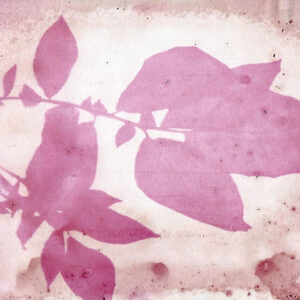
using sketchbooks to make visual notes
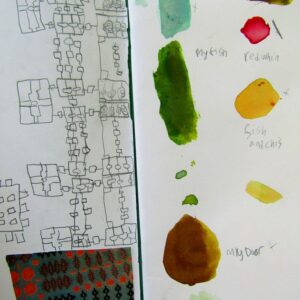
Show me what you see





































